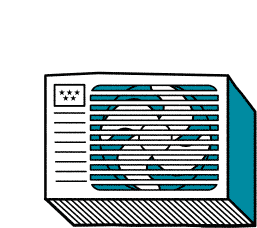43 Safe Work Practices
Learning Objectives
Describe Safe work practices
This chapter talks about some of the behaviors that will promote a safe workplace.
Housekeeping
A clean, properly maintained and organized work environment is an important part of preventing accidents and injuries.
- Ensure routine and periodic maintenance and housekeeping.
- Use enough of the correct types of containers for waste.
- Use adequate storage space for work materials.
- Suppress dust by wet sweeping or vacuuming dusty areas.
- Keep all floors, aisles and ramps free of potholes, tripping hazards, dust and debris.
- Keep all stairs, gangways and platforms clear and railings intact.
- Keep all entrances, exits and doors unobstructed.
- Keep window ledges, overhead pipes and rafters clear of dust and debris.
- Keep fire fighting equipment, first aid boxes and other emergency equipment clean, operational and unobstructed.
- Ensure lighting is adequate and fixtures are clean. KEEP equipment clean and properly serviced.
- Keep vents and exhausts unobstructed.
- Keep washrooms and lockers clean and sanitary.
- Do not use emergency equipment such as fire extinguishers as door stops.
- Do not prop open fire doors.
- Do not use flammable cleaners without adequate ventilation.
[h5p id=”7″]
Indoor Air Quality
Indoor Air Quality (IAQ) refers to the total indoor environment including:
- air contaminants entering the building through the ventilation system.
- airborne biological agents such as mold, fungi, and substances from plants.
- emissions from furniture, glues, sealants paints and varnishes.
- toxic gases, vapours, fumes, etc. from laboratories, photocopiers and other processes and activities taking place inside the building.
- indoor environment factors such as temperature, humidity, noise, lighting and air movement.




Symptoms of Poor Indoor Air Quality
The occupants of buildings with poor Indoor Air Quality experience headache, fatigue, dry throat, shortness of breath, skin irritation, dizziness, itchy eyes, bleeding nose and/or general malaise.
Recognizing and Controlling Indoor Air Problems
The best way to determine whether or not there is an indoor air problem is to ask people. A wide variety of questionnaires are available for conducting employee response surveys.
The first step of controlling indoor air quality is to monitor the ventilation system’s effectiveness. This involves measuring the carbon dioxide (CO2) level in the air.
Where the level of CO2 is low, indoor air quality is better because air contaminants are diluted. Indoor CO2 concentrations below 1000 ppm (parts per million) are generally accepted as a good indicator of ventilation effectiveness. The concentration of CO2 in outdoor air is about 350 ppm.
Lockout Procedures
When equipment is stopped for maintenance or repair, accidents can happen if the power source is still activated or can accidentally be activated, setting the machine into motion. Accidental start-up of machines is a major cause of serious injuries, including amputations, and fatalities. “Lockout” is the process of safeguarding against this.
Purpose
The purpose of lockout is to protect an employee working in a confined space, on a machine, or on moving equipment.
Established Procedures
Your employer must have an established safe working procedure which includes the following instructions:
- MAKE SURE that you possess an individually numbered lock and key if you are required to work on moving equipment or enter a confined space, vessel or machine.
- SHUT OFF the machine or equipment, then disengage all sources of power and lock them in the OFF position.
- BLOCK or otherwise immobilize mobile equipment and devices that are likely to fall.
- RELEASE the buildup of air, hydraulic, steam or gas pressure and ground electric charge buildup before starting work.
- LOCK valves and switches. Some employers may require that the supervisor attach his/her lock too.
- RELEASE any tension or pressure, such as springs on a mechanism, where possible.
- NOTIFY users that work is being done on the machine or equipment.
- INSTALL your personal lock on the control devices or on the “Lockout Board” provided.
- CHECK by pushing the start button or switch to ensure that the correct switch has been disconnected.
- ENSURE that neither the lock nor the signs can be easily removed.
- FOLLOW procedures in compliance with legislated safety requirements.
- DO NOT have another person remove your padlock or block signs.
- DO NOT restart a machine unless all safeguards are in place.
Sources:
[h5p id=”8″]
Production restart packages | 2020-07-10 | Food Engineering (foodengineeringmag.com)
Does your facility use a bolted pressure switch? – HSB Equipment Connection Blog
Shun Catastrophic Injuries With Top-Notch Safety Signs – Brain Rack
Why Electrical Grounding is Important for Your Business – HomesFornh
